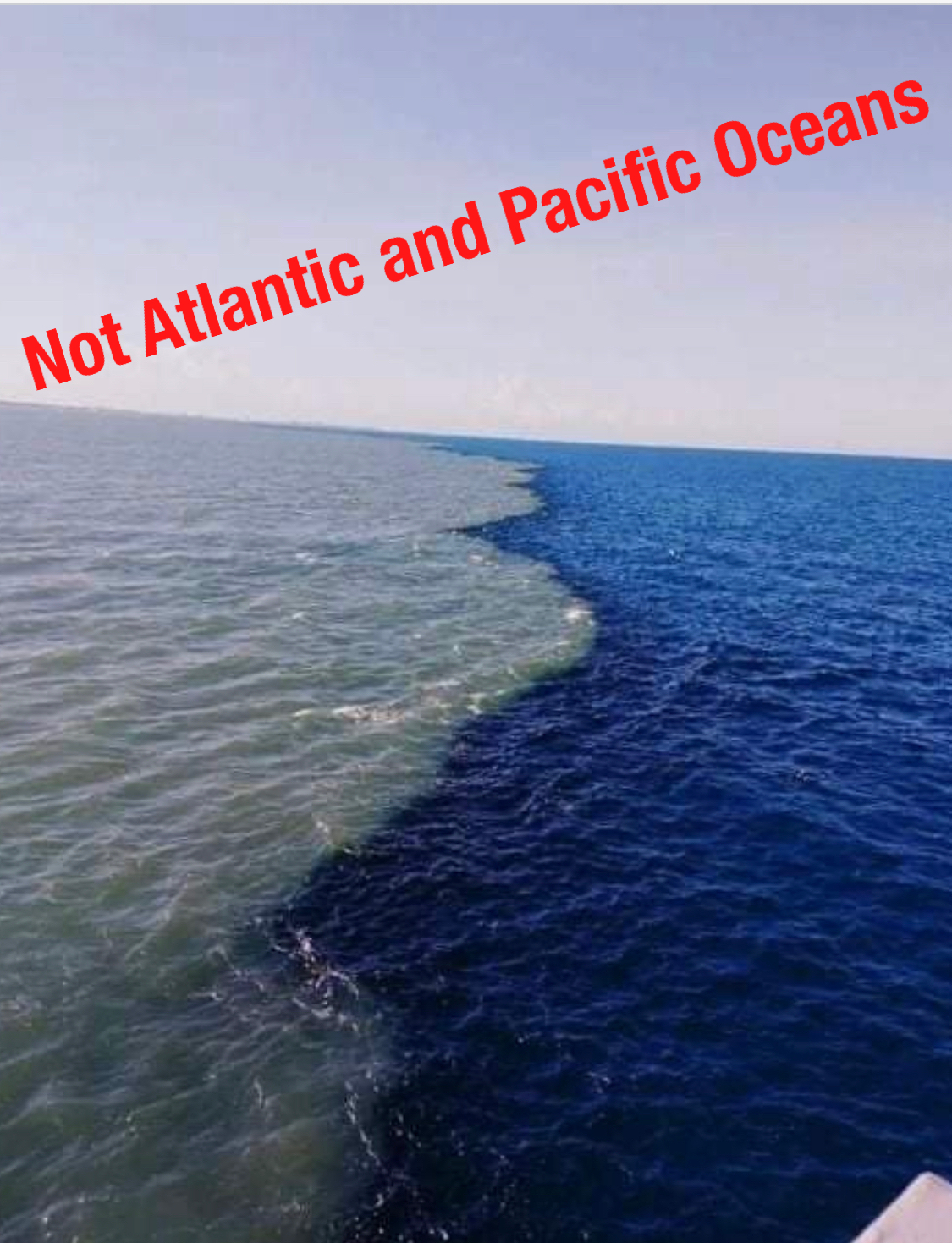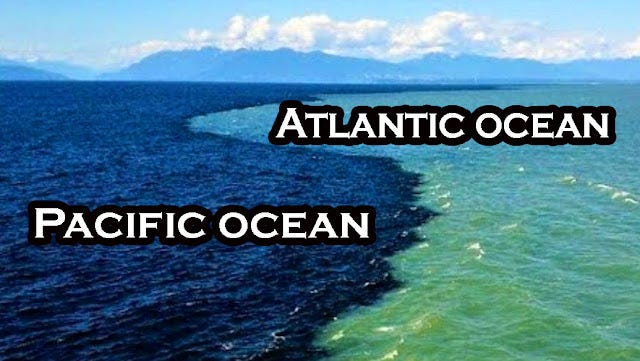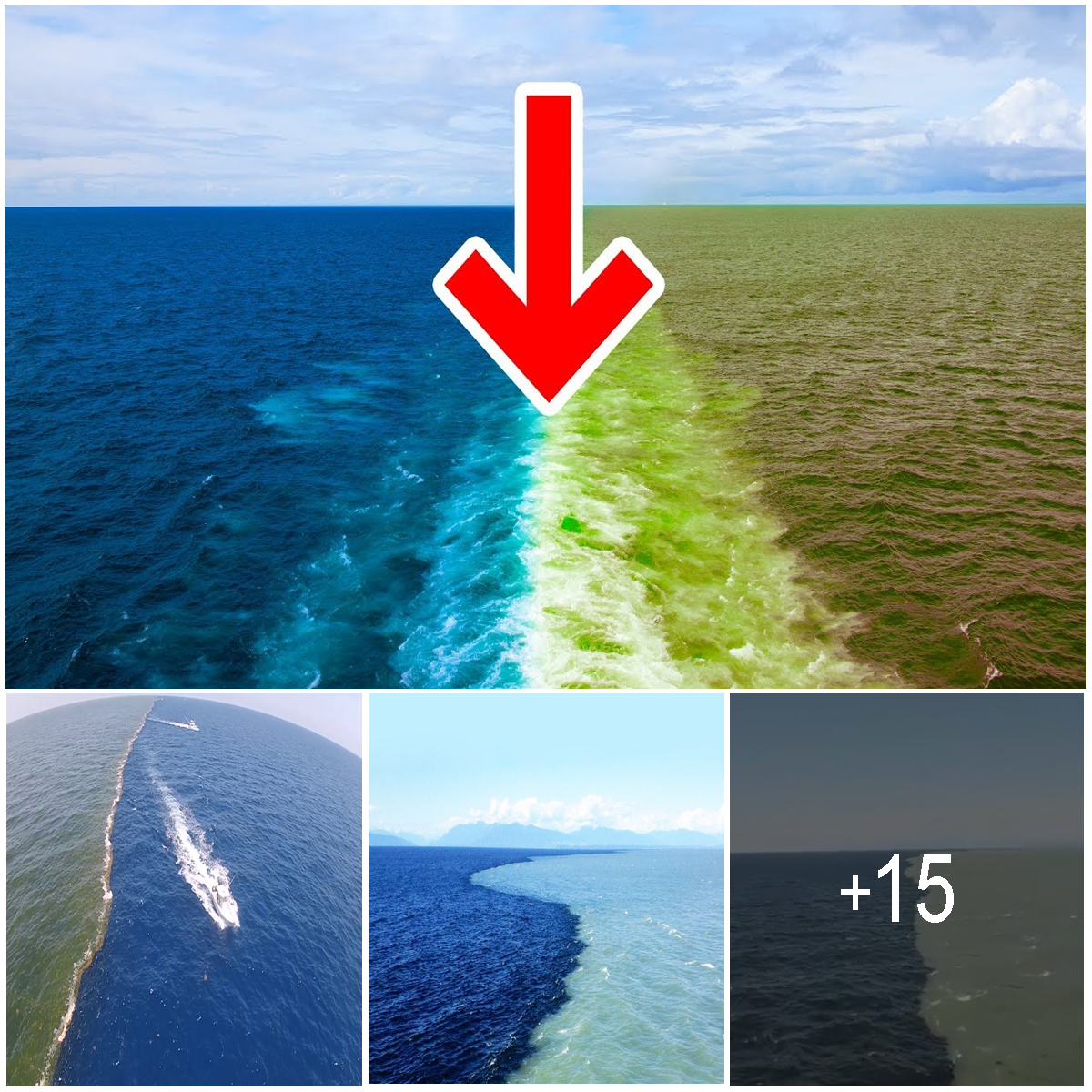Why Atlantic And Pacific Ocean Never Mix

Have you ever seen a glass of water with oil sitting on top? That's kind of like what happens where the Atlantic and Pacific Oceans meet! They don't exactly *mix* like you'd expect.
Imagine two giants, each carrying a bucket of water. One giant, Atlantic, has slightly saltier, denser water. The other, Pacific, has fresher, less dense water.
The Great Oceanic Handshake (That Isn't Really a Handshake)
Where these two oceanic giants meet, often near places like Cape Horn at the tip of South America, it's more like a very awkward first date than a proper mixer. You see a distinct line.
Think of it as two different personalities. Atlantic is the boisterous, salty sailor, while Pacific is the calmer, slightly sweeter type. They just have different tastes!
Density is the Key
Why this reluctance to mingle? It all comes down to density. The Atlantic's higher salt content makes it heavier.
Denser water tends to sink, while less dense water floats. So, instead of blending perfectly, the Pacific water sort of sits on top of the Atlantic water.
It's like trying to mix salad dressing – the oil and vinegar will separate if you let them sit for a while. The oceans do the same thing, but on a *much* grander scale.
Surface Tension's Supporting Role
Another player in this drama is surface tension. It's the property that allows insects to walk on water.
Differences in salinity and temperature between the two oceans create a noticeable surface tension. This contributes to the visible line where they meet.
It's almost as if there's an invisible force field preventing complete mixing. How rude!
Not a Perfect Separation, But Close!
Now, it's not like there's a giant wall separating the oceans. They do eventually mix, but it's a slow, gradual process.
Currents, winds, and other natural forces cause some mixing over time. However, the initial difference in density makes a dramatic visual boundary.
Think of it like slowly stirring honey into tea. You'll eventually get sweet tea, but for a little while, you can still see the honey swirling around.
It's a constantly shifting, dynamic zone. Even though they don't blend instantly, the oceans interact and influence each other in countless ways.
A Constant Reminder of Nature's Quirks
The fact that the Atlantic and Pacific don't immediately mix is a reminder of how fascinating and complex our planet is.
It shows us that even things as vast and powerful as oceans have their own unique characteristics and behaviors.
So next time you see a picture of this oceanic divide, remember it's not a sign of some great oceanic feud, but a beautiful demonstration of density, salinity, and the wonders of the natural world. It's like they're saying, "We're friends, but we like our personal space!"
It's a reminder that even things that seem like they *should* blend seamlessly often have their own unique stories to tell. So keep exploring, keep asking questions, and keep marveling at the wonders around us!


















